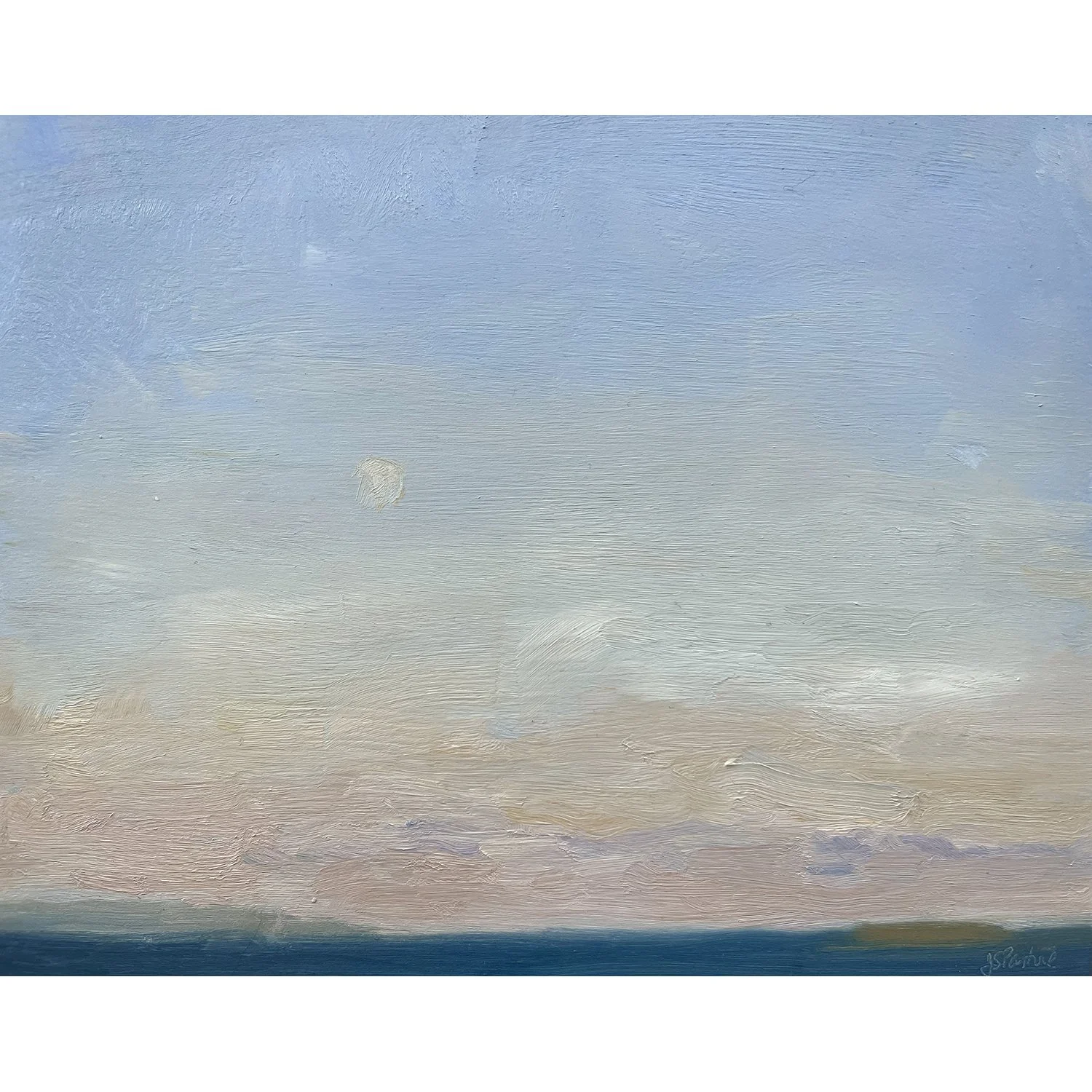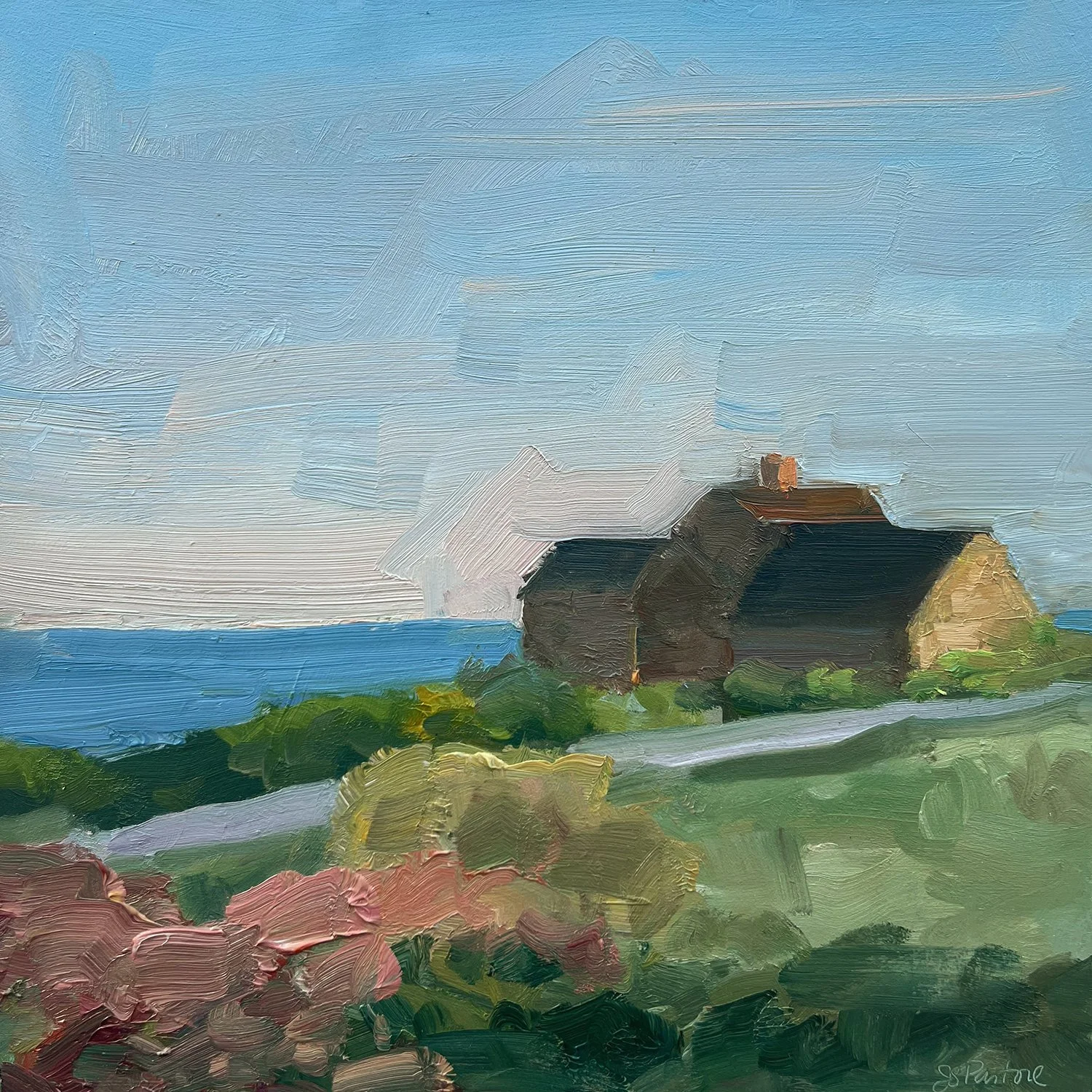Jeanine Sobell Pastore Studio Tour
Earlier this winter I had the chance to visit Jeanine Sobell Pastore at her studio in Lexington, Massachusetts, just before we welcomed her to our roster of gallery artists. I was able to see Jeanine’s finished interior and landscape paintings alongside her in-process works, many of which she begins on location en plein air.
I arrived at Jeanine’s work last spring shortly after opening The Willard Gallery while on the hunt for figurative work for an art consulting project. Thankfully client was as taken with Jeanine’s still life paintings and figures as I was. Months later, after getting to know one another through emails, social media messages, and an in-person gallery visit, adding her as one of our artists here couldn’t have felt more natural. I’ve taken so much - both about art and life - from our conversations in Maine and in Boston, and I’m grateful to be able to share more of her unique and thoughtful perspective through our Q&A below.
Read on for more from Jeanine, including her process, her inspiration, and her backstory.
How might you describe your work to a first time viewer?
My work is inspired by intense observation that somehow guides me through the process of painting. I react to visual stimuli, as well as physical and emotion sensations. It feels like a rush of excitement that becomes more focused and usually challenging if I keep on pushing - not thinking about where I’m going or what it’s going to look like at the end.
What drives you to create?
Good question. I’m not really sure! It feels like a part of my being, and comes naturally… although not always easily. That’s the challenge and probably what keeps me going.
How did you become an artist?
It’s taken a long time to feel confident enough to call myself an artist. I often feel like this is a gift I’ve finally allowed myself to accept.
My tendency is to look at nature or whatever surrounds me and let my mind wander. I remember as a child, visiting my grandparents in Bensenhurst, Brooklyn. I would sleep in my Dad’s childhood room and wake up to a print of Gauguin’s painting “Ta Matete” on the wall. I remember staring at it for a long time before getting out of bed… checking out the way the women sat on the park bench, chatting, looking in many directions, Egyptian-like, colorful, mysterious.
My grandma taught me how to embroider, crochet, and knit. My mom was a pianist and extraordinary cook who taught me to read music and listen to classical music. My father was a research scientist at a university, who also created the most precise and beautifully drawn technical studies when he was a student at Brooklyn Tech. I discovered my ability to accurately draw what I see at the age of 15 while taking an art class in 10th grade. It’s like a floodgate opened and felt exhilarating.
I went to Bowdoin College as a pre-med student, because art didn't seem like a good career path… and I also loved chemistry. But that first idea didn’t work out so I spent my junior year abroad studying art in Rome through the Tyler School of Art. That was a turning point for me.
After graduating from Bowdoin and moving to the Boston area, I had to find a way to use my visual and technical skills in a job that would pay the bills. My first real job was with James Ballard Multimedia, who taught me how to do pin registered optical photography, graphic design, and storyboards. We created multi-image shows using banks of computer-controlled slide projectors for Polaroid, The Boston Ballet, and other Boston-based corporations. Afterwards, I freelanced for almost twenty years for many production companies and corporations as a designer and art director on audiovisual productions.
In the meantime, I married my Bowdoin sweetheart and had three children. As the kids got older, I stepped away from this field of work and slowly made my way to becoming a visual artist.
It’s been a process and my work is still developing.
What does your process look like?
I work primarily in oils and generally use a palette of 8 or so colors plus white. Drawing out the composition plays a large part in the early stages of a piece.
When working on an interior, my drawing is precise, usually with pencil or charcoal, and can take a few days before the oils are introduced. Then I can relax and get into the fluidity and nature of the paint, guided by the composition. Landscapes tend to be quicker, more reactive, spontaneous. Mixing colors with a palette knife while finding specific color and tonal relationships is important to me. I love to discover nuances in white and gray.
Most of my paintings are painted on-site. I have a couple of portable set-ups that are easy to set up outside for plein air painting and indoors for my larger interiors. I am currently working on a series of larger paintings in my studio, inspired by smaller plein air paintings.
What currently inspires your art?
The Maine Coast.
The Adirondack Mountains of NY.
Flowers such as ranunculus, hydrangeas, sunflowers.
Beautiful vases, pottery.
Light, reflections, overall mark making.
What is your connection to Maine?
I went to Bowdoin College in Brunswick, Maine back in the late 70’s early 80’s. Met my husband there, who is also a Bowdoin grad. We have many friends up in that area and feel an intense attachment to the Maine coast.
Which artists inspire you the most?
Michelangelo, Cezanne, Vuillard, Rembrandt, Turner, Morandi, Diebenkorn, Joan Mitchell.
Also, I admire the work of my contemporaries through museum and gallery visits, as well as Instagram.
A big thank you to Jeanine for opening the doors to her studio and for sharing so much about her unique history, her process, and her inspiration!
Follow along with Jeanine on Instagram where you can keep up with her latest work and catch glimpses of her en plein air painting setup!













